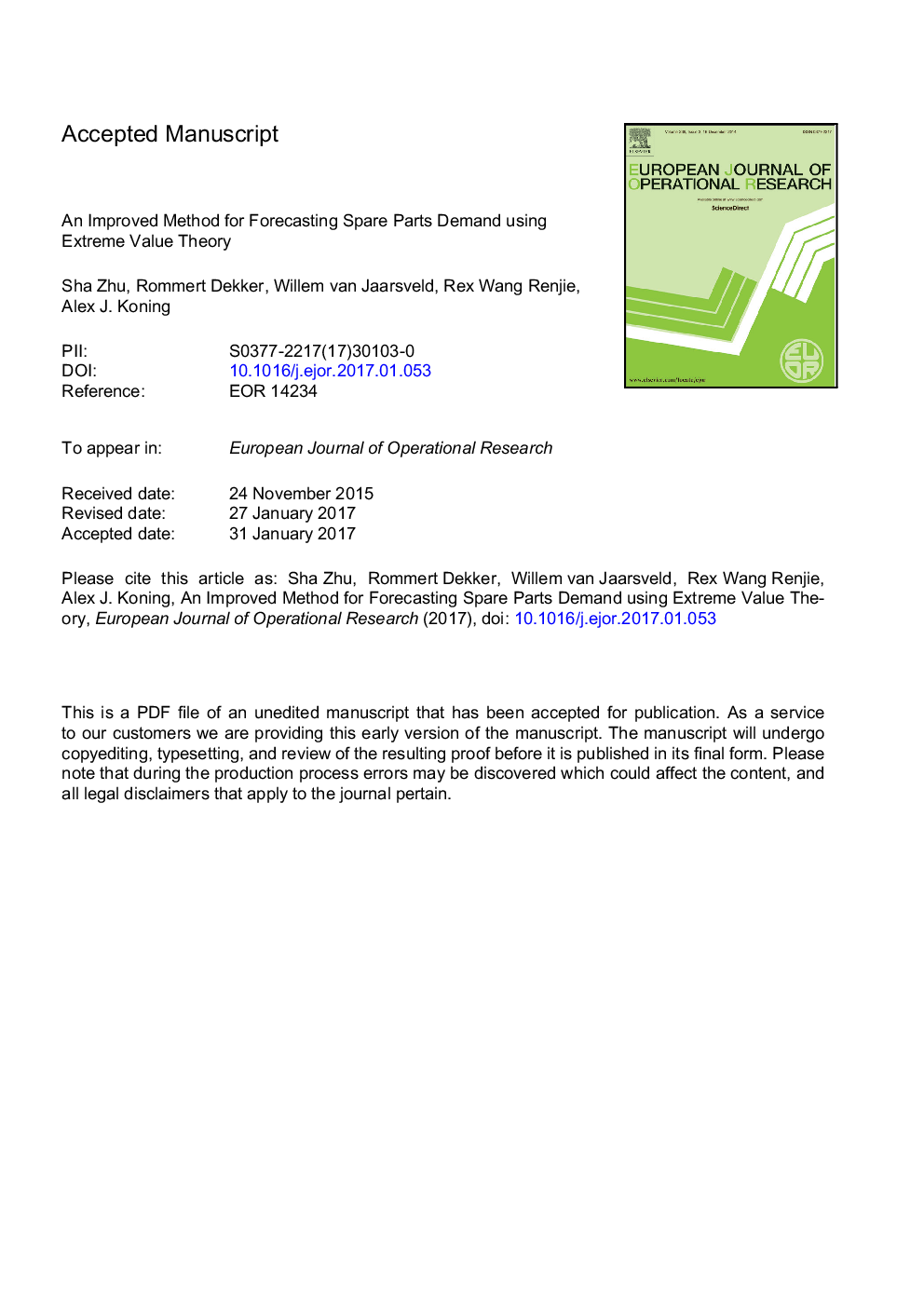| Article ID | Journal | Published Year | Pages | File Type |
|---|---|---|---|---|
| 4959548 | European Journal of Operational Research | 2017 | 34 Pages |
Abstract
Inventory control for spare parts is essential for many organizations due to the trade-off between preventing high holding cost and stockouts. The lead time demand distribution plays a central role in inventory control. The estimation of this distribution is problematic as the spare part demand is often intermittent, and as a consequence often only a limited number of non-zero data points are available in practice. The well-known empirical method uses historical demand data to construct the lead time demand distribution. Although it performs reasonably well when service requirements are relatively low, it has difficulties in achieving high target service levels. In this paper, we improve the empirical method by applying extreme value theory to model the tail of the lead time demand distribution. To make the most out of a limited number of demand observations, we establish that extreme value theory can be applied to lead time demand periods computed over overlapping intervals. We consider two service levels: the expected waiting time and cycle service level. Our experiments show that our method improves the inventory performance compared to the empirical method and is competitive with the WSS method, Croston's method and SBA for a range of demand distributions.
Related Topics
Physical Sciences and Engineering
Computer Science
Computer Science (General)
Authors
Sha Zhu, Rommert Dekker, Willem van Jaarsveld, Rex Wang Renjie, Alex J. Koning,
